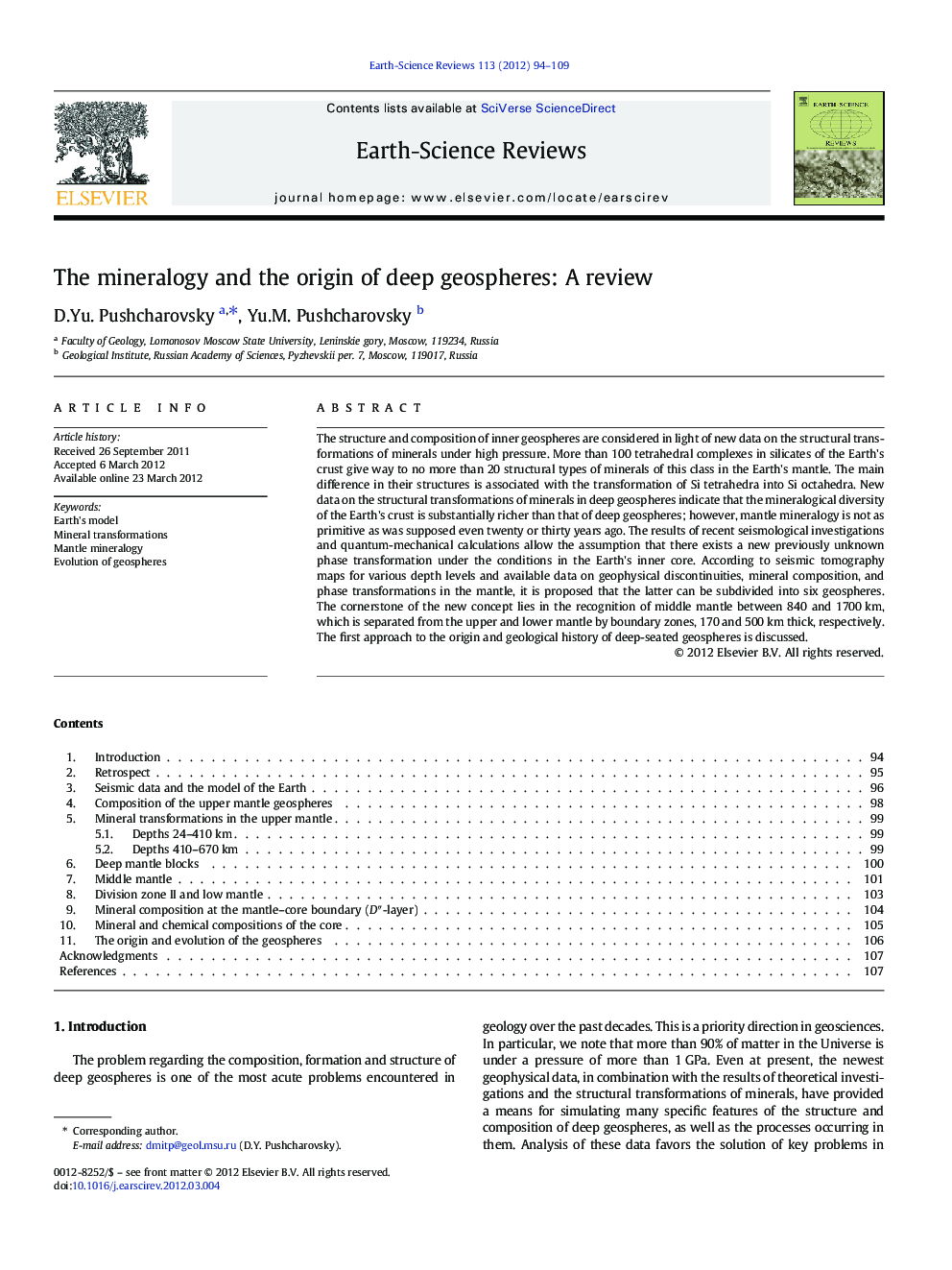| Article ID | Journal | Published Year | Pages | File Type |
|---|---|---|---|---|
| 4725929 | Earth-Science Reviews | 2012 | 16 Pages |
The structure and composition of inner geospheres are considered in light of new data on the structural transformations of minerals under high pressure. More than 100 tetrahedral complexes in silicates of the Earth's crust give way to no more than 20 structural types of minerals of this class in the Earth's mantle. The main difference in their structures is associated with the transformation of Si tetrahedra into Si octahedra. New data on the structural transformations of minerals in deep geospheres indicate that the mineralogical diversity of the Earth's crust is substantially richer than that of deep geospheres; however, mantle mineralogy is not as primitive as was supposed even twenty or thirty years ago. The results of recent seismological investigations and quantum-mechanical calculations allow the assumption that there exists a new previously unknown phase transformation under the conditions in the Earth's inner core. According to seismic tomography maps for various depth levels and available data on geophysical discontinuities, mineral composition, and phase transformations in the mantle, it is proposed that the latter can be subdivided into six geospheres. The cornerstone of the new concept lies in the recognition of middle mantle between 840 and 1700 km, which is separated from the upper and lower mantle by boundary zones, 170 and 500 km thick, respectively. The first approach to the origin and geological history of deep-seated geospheres is discussed.
